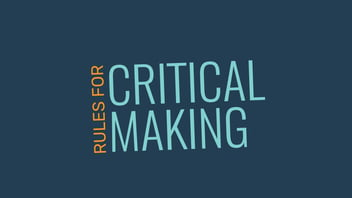Explo Tech: Three of our Favorite Programming Applications

Here’s the thing: if you use a PC or laptop (or even a cell phone) — even if you use a spreadsheet or a word processor — you already know how to program a computer. If you're curious to learn more, here are a few resources to help you (and your children) get started.
For decades (about 1950 - 1980), programming a computer was so complicated that being able to do it was the province of a select few incredibly dedicated, technically-oriented people. By 1984, the year Apple released the Macintosh, learning how to program a computer became accessible to anybody courageous enough and creative enough to give it a try. But today, 30 years later, the popular notion that programming a computer is something that only brainiacs or geniuses should even try to do is still rampant.
The exact opposite is true. Computers are made to be tinkered with — and learning how has never been more accessible than it is now. “Programming,” or “writing code,” is merely telling the computer what you want it to do. Anybody can do it, and most of us already have at some point.
This article lists 20 programs children can use to embrace programming and learn how to code. I’ll be going into some of these applications and sites in more depth in future blog posts, but I’d like to take a moment here to touch on some of the best applications they list for different age groups. And even though some of these apps look may like they were designed for children, any of us can have fun giving them a try!
For younger ages, I’m really loving the Hopscotch iPad App. In Hopscotch, you manipulate animated characters into doing things, such as moving, dancing, or drawing. Along the way, you learn many of the basic concepts of programming, such as defining instructions in sequence and looping groups of instructions. You also get to play around with (and learn about) geometric concepts, such as the Cartesian coordinate system. But more importantly, it’s really fun and engaging. As you can see, I couldn’t put it down until I had gotten the bear to make spiral drawings for me. How did I do?

A longtime favorite of ours at Explo is Lego Mindstorms. We love it so much we use it in both in Construct A Robot, an Explo Mini concentration, and in Disaster Bots, an Explo at Wheaton course. The Mindstorms are a fantastic introduction to robotics, with a cross-discipline adventure involving programming (telling robots what to do), engineering (building robots), and design.
For our older students, we ask the question: What would you do with a $35 computer? it's called Raspberry Pi — a particularly exciting computer that disguises a lot of power in a very simple, small, and inexpensive package. So what could you do with a $35 computer? You might learn to make web pages, make a GPS tracker, or learn the Python Programming Language. Or many, many other things. I love this project because simple, inexpensive components, like Raspberry Pi, are often the best catalysts for creativity.

I hope this has gotten you excited about tinkering with computers! Do you have a tech-related project or app or device you'd like me to check out? Do you have something cool that you'd love to share with us? Send an email to tech@explo.org, and I'll give it a look. I'll be back with more in-depth reviews of some of my favorite tech in the coming months.
Written by Donald Merand, Director of Information Technology at Explo
Raspberry Pi diagram courtesy of Raspberry Pi



